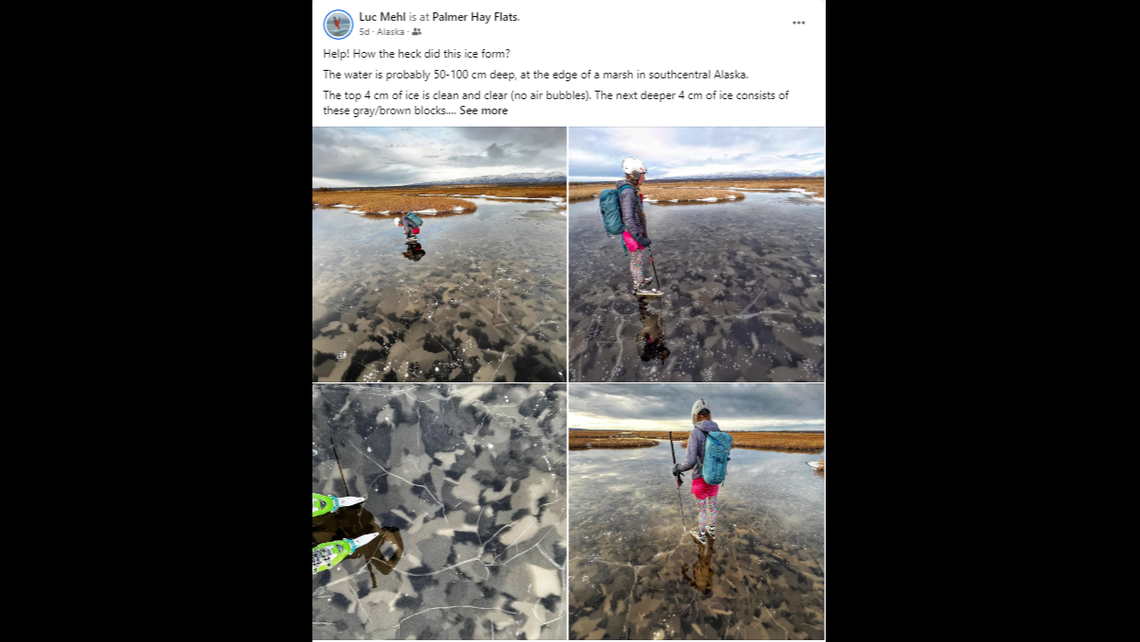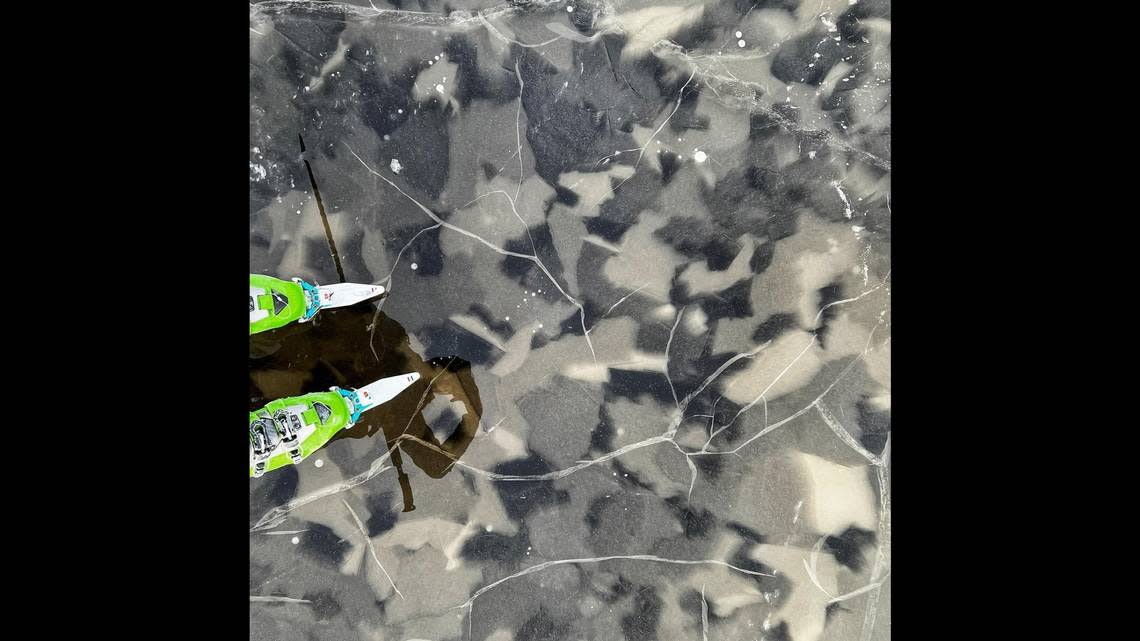‘Army camouflage ice’? Odd frozen formations in Alaska marsh defy easy explanation
A frozen marsh in south central Alaska has become a source of debate on social media after it was found covered in “army camouflage ice.”
The mysterious formation came to light when videos and photos were shared on social media by Luc Mehl, an author, educator and Alaska outdoorsman.
Those images show a gray/brown patchwork of ice that looks remarkably like the military’s desert uniforms.
“We often see unique things in the ice — that’s part of the fun. Frozen fish, wild methane bubbles, etc. But it is usually pretty easy to theorize what caused the features,” Mehl told McClatchy News.

“That wasn’t the case with this camouflage ice. I was completely stumped. And for the record ... I shouldn’t be stumped. I spent two geology graduate programs literally studying how crystals grow and deform. That’s how weird these textures struck me.”
The formation covered 100 square feet of the Palmer Hay Flats, which is outside of Anchorage, Mehl says.
He was there Nov. 12, participating in a hobby known as “wild ice” skating, which involves skating atop Alaska’s frozen waterways. Palmer Hay Flats is a popular spot for the sport because overflowing creeks form “nice new ice and strong winds often sweep the ice clean.”

The water in the marsh was 3 feet deep, and about 6 inches of it had turned to ice, he says. (The low the night before had been 25 degrees.)
“I’ve never seen this kind of ice, even after a lifetime of living and exploring in Alaska,” Mehl says.
“The camouflage crystals ice contained thousands of tiny bubbles, but they weren’t methane bubbles. Methane bubbles are large, and they flatten out when they rise up and rest against the ice.”
Mehl, who has degrees in geology and geophysics, at first suspected the formation reflected a “pattern at the bottom of the water column ... something to do with vegetation or rocks.”
However, there aren’t any rocks in the marsh, he says, and it seems far-fetched to imagine “vegetation on the bottom could produce such well-defined crystal-shaped patterns in the ice.”
His other best guess is far more complicated and involves “degassing during a solar heat/thaw event,” he wrote on Facebook.
“The big questions are: Are the camo blocks individual crystals? What caused the bubbles to form? Why are there different bubble densities right next to each other? Does the pattern represent something from below ... or from above (due to heating)?”
Mehl shared the photos hoping to hear theories from others, but the complex responses — involving bubbles, gases, water salinity and currents — have prompted more questions than answers. This includes observations from multiple PhD earth scientists.
Among the theories: The odd ice formed on the surface of the marsh and then was covered by more ice ... or it formed underneath the surface and rose up, only to be covered by more ice.
Hikers thought they saw garbage along Alaska coast. It was a field of large bones
11,100-year-old trap proves people lived in Alaska 1,000 years earlier than believed
Rare fossil of huge American lion found on just-uncovered sandbar in Mississippi River
